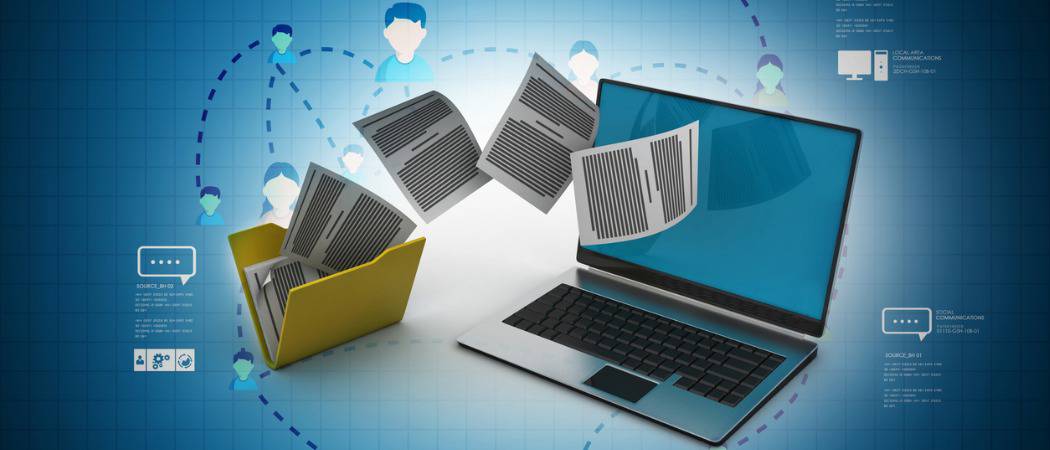Enable Nearby Sharing
First off, you need to have Bluetooth enabled on both devices. You also need the Nearby Sharing feature turned on. You manage it by heading to Settings > System > Share experiences. There you can choose who to share and receive content from and the folder the received files are stored.
Note: You can turn Nearby Sharing, Bluetooth, and Wi-Fi on or off via the Action Center. Hit Windows Key + A to launch Action Center and click the appropriate button to turn the features on or off. If you don’t see one of the buttons, go to Settings > Notifications & actions > Add or remove quick actions and enable the button you need.
Share a File
Open File Explorer and find the file you want to share with another device. Then click the Share tab from the Ribbon and then the Share button. Or, a quicker action is to right-click the file you want and choose Share from the menu.
Either way, a second window will open that lists nearby devices, contacts, and other apps you can choose from to share the file.
If you’re sharing the file, you will see a notification that the device is being contacted to send the file.
A notification will pop up on the other device so that the user can accept or decline the transfer. If there is no response or something isn’t configured correctly, the transfer will timeout. And you will find the file saved in the Downloads folder or whichever one you set it to in the Shared experiences in Settings.
Share a Photo or Link
You can share pictures through the Photos app and links via Microsoft Edge. Sharing them is similar in both apps. To share a link to a webpage, navigate to that page and click the “Share” icon in the toolbar and choose the PC to send the link to. Same with the Photos app. Find the picture you want to share, click the Share icon, and then the PC to send it to.
A few things to keep in mind here. The device you’re sharing a file with needs to be within Bluetooth range and running Windows 10 1803 or above. Both machines will need to have Bluetooth 4.0 or above. Also, Nearby Sharing isn’t available for files in OneDrive because it already has its own file-sharing experience. If it’s not working, verify everything is set up correctly as explained above… i.e., Near Share enabled on both devices. Also, make sure your Bluetooth driver is updated. In fact, for me, I needed to uninstall and reinstall my Bluetooth device on one of my PCs to get it working correctly. You manage that in Device Manager.
And this works best for transferring documents and other small files. If you try to transfer a large file, it will be prolonged, and in that case, using a flash drive will be much easier. The file-sharing experience isn’t perfect yet, and Microsoft still needs to work out some kinks in Nearby Sharing. Still, it should improve over time, and it’s quite handy once you have everything set up. Give it a try and let us know what you think. If it’s not working and you need troubleshooting advice, hop into our Windows 10 Forums for more discussions.
![]()









